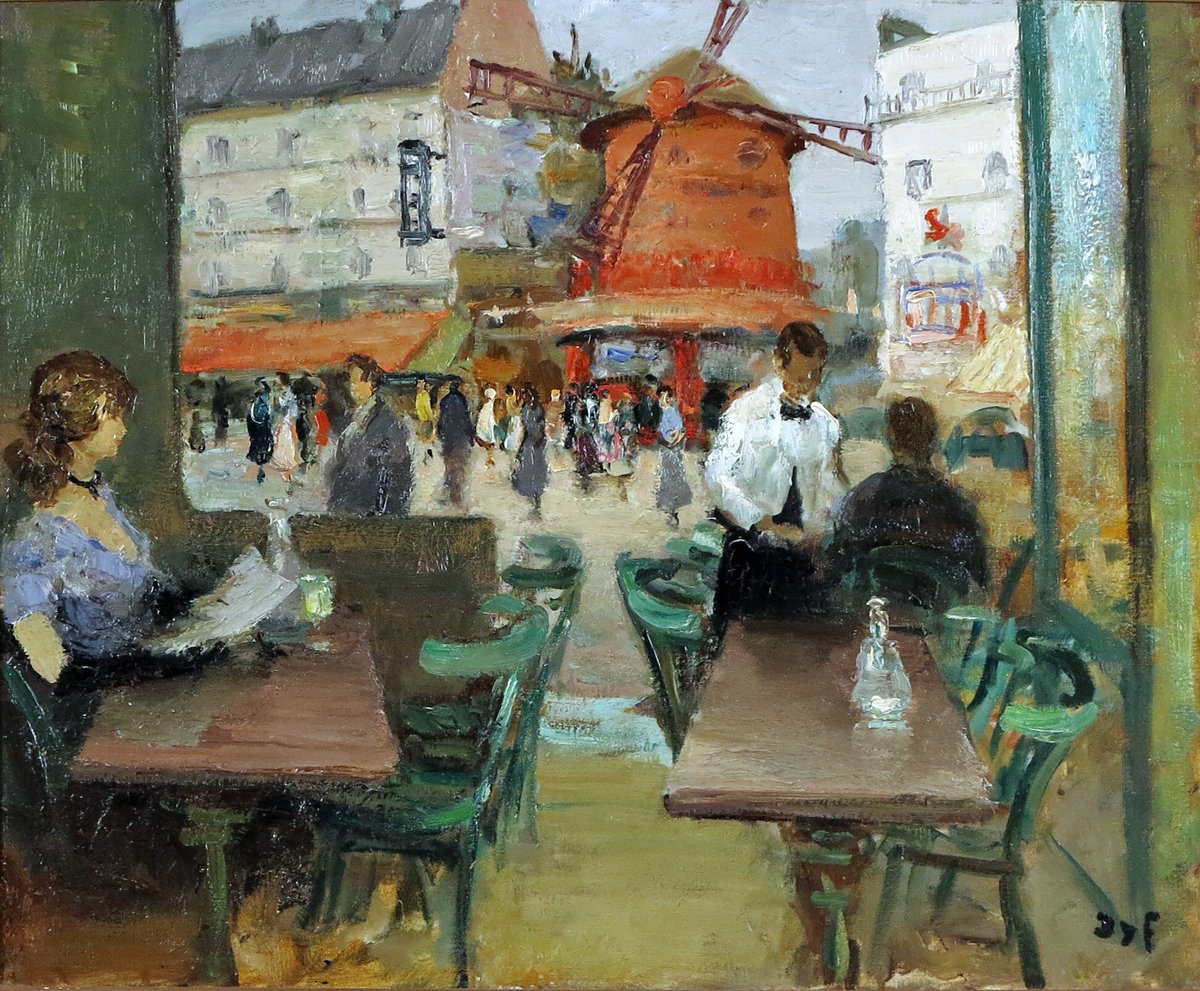Paintings
Marcel Dyf
French, 1899-1985Moulin Rouge
Oil on canvas23 ½ by 28 ½ in. W/frame 32 ½ by 37 ½ in.
Signed lower right Dyf
Provenance:
Private Collection San Fransisco CA.
Le Trianon Fine Art & Antiques, Sheffield, MA.
See Artist Bio below.
Marcel Dyf
French, 1899-1985Marcel Dyf (Marcel Dreyfus) was born in Paris on October 7, 1899. As a youth, he was influenced by the Impressionist and Post-Impressionist movements that he observed in Paris and Normandy, where he spent his holidays. Dyf decided in his early twenties to give up his career in engineering and become an artist. He moved to Arles in 1922 to pursue his calling and he kept a studio there until 1942. He had little formal artistic training but owed much of his inspiration to the great masters of the past such as Rembrandt, Vermeer and Tiepolo.
In Provence, Dyf was challenged by a new range of colors, light, landscapes, and images. Whilst in Arles, Dyf was commissioned to paint a number of large historical and decorative works, mostly frescoes, in the town halls of Saint Martin-de-Crau and Les Saintes Maries-de-la-Mer, in Arles, in the Museon Arlaten and in the dining hall of the Collège Ampère. He also designed windows for the church of Saint Louis in Marseille. In 1935, Dyf moved to Paris and worked at a studio on the left bank until the city was invaded in 1940. Dyf entered the Résistance in Corrèze and the Dordogne. After the Liberation, he set up a studio in Saint Paul-de-Vence and divided his time between Paris and the South. Galleries in Cannes, Nice, Marseille and Strasbourg began to sell his paintings, and in Paris he exhibited and sold his paintings through the Salon d’Automne, the Salon des Tuileries and the Salon des Artistes Français. In the first half of the 1950s Dyf worked in Paris throughout the winter and spent the summer in Cannes, where he set up a studio-gallery and established a regular following among American visitors to the Riviera. In the summer of 1954, Dyf met Claudine Godat. and her arrival in his life acted as a catalyst, bringing Dyf’s art forward to the threshold of its most mature phase.
In 1956, they married and bought a 16th century hunting lodge at Bois d’Arcy, near Versailles. This became their main home, but they still returned to Provence each winter on painting trips. During a visit to Brittany in 1960, Dyf became enchanted with this remote, beautiful region and its artistic potential. By the end of his life, Dyf spent autumns in Versailles, winters in Provence, and summers in Brittany. He also travelled in Morocco, Venice, the United States, Holland and England until his death on September 16, 1985. To watch Dyf paint was entrancing. Even as an old man, he would stand rather than sit before the easel, working with extraordinary vigor and intense concentration. His palette was a rainbow of fresh colors and his hand continually darted back and forth from the canvas. At intervals he would step back or consider briefly another picture before returning to the easel, his eye refreshed. Usually he sketched straight onto the canvas, which he set up on his traveling easel. He would work on a subject for two or three hours and return the next day, in search of the same light on the landscape. If he sketched, it would be in charcoal and he generally made a number of drawings to record the broad proportions and the minutiae of his subject. As soon as he reached home with a group of sketches he would begin work instantly, drawing on his new ideas while the images were still fresh in his mind, so that soon he had pictures in all stages of completion in the studio. He worked on each canvas in the open air whenever possible. His art is youthful, yet traditional, with a sensational use of color.
His paintings give an outward appearance of being simple, undemanding compositions, yet in reality his artistic process was complex, rigorous, disciplined and measured. The final effect, though, is to produce an art form that is so disarmingly uncomplicated that it remains, as the artist wished, accessible to all.
Reference:
Dictionnaire des Petits Maitres de la Peinture 1820-1920, by Gerald Schurr & Pierre Cabanne, pg. 400, Tome I, A a H.



